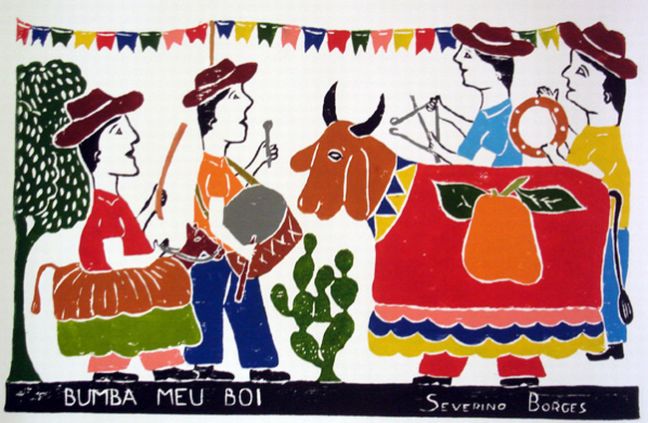Humberto Ramirez & Giovanni Hidalgo
Best Friends
1999
1999
Tracks:
1. San Juan Ritual
2. Celebrando
3. Hasta Decir No Mas
4. A Puerto Rico
5. Clean
6. Herencia
7. La Perla
8. Best Friends
Personnel:
Humberto Ramirez : Trumpet
Giovanni Hidalgo : Percussion
Oskar Cartaya : Bajo Sexto
Papo Lucca : Piano
Horacio "El Negro" Hernández : Bateria
Carmen Luz Quiñones : Peinado
Special Guests:
Tito Puente : Timbales
and with a very special appearance by their fathers:
Humberto "Pipo" Ramírez on Tenor Sax
José "Mañegue" Hidalgo on Congas.
♫☆`*♥¸¸.•*¨*•♫☆`*♥¸¸.•*¨*•♫
♫☆`*♥¸¸.•*¨*•☆♫`*♥¸¸.•*¨*•♫
For Humberto Ramirez and Giovanni Hidalgo, this recording was more than a mere opportunity to reunite in a studio. It was a 'reliving' process. For two humble individuals that were both born in 1963, in Old San Juan, that grew up together, this was a recording that ‘had’ to happen somewhere down the road. More than being childhood friends, their paths have had their turns and twists, but their bond has never been touched.
After close to a decade performing with his own group (the Humberto Ramirez Jazz Project), Humberto has developed his voice, direction and vision on the trumpet and has become a respected record producer in the process. In the mean time, Giovanni's congas and percussion have recorded Grammy nominated albums (‘Hands Of Rhythm’ with Michel Camilo) and performed with world named acts (Paul Simon and Mickey Hart, among them) around the globe. These experiences, blended with the commonality of their backgrounds and brotherhood were put to the test on this historic recording.
After close to a decade performing with his own group (the Humberto Ramirez Jazz Project), Humberto has developed his voice, direction and vision on the trumpet and has become a respected record producer in the process. In the mean time, Giovanni's congas and percussion have recorded Grammy nominated albums (‘Hands Of Rhythm’ with Michel Camilo) and performed with world named acts (Paul Simon and Mickey Hart, among them) around the globe. These experiences, blended with the commonality of their backgrounds and brotherhood were put to the test on this historic recording.
Latin jazz is generally hot-blooded music, but a quiet fire is maintained by the music of trumpeter/flugelhornist Ramirez and percussionist Hidalgo. Not that this is salsa light; far from it. The music sports a tempura-like crust: airy, simply melodic, and spicy, but not burning. The heat does come from Hidalgo on congas and timbales alongside the exciting drummer Horacio "El Negro" Hernandez, while pianist Papo Lucca and bassist Oskar Cartaya match Ramirez, step-for-calm, patient step. Just about every well established Afro-Cuban/Puerto Rican rhythm is heard during the eight cuts, five penned by Ramirez. "San Juan Ritual" sets the compact, non-threatening tone in mambo fashion. This piece and the easy cha-cha-cha "Celebrando" reserve space for Ramirez to trade fours with the Hidalgo and Hernandez cooking on timbales and drums. "A Puerto Rico" uses standard clave rhythm, closest to a 50/50 latin/jazz mix, the trumpeter's effortless lines recognizing the witty pianistics of Lucca before Hernandez steals the show with an incredible solo. "Herencia" and the title track relieves Ramirez of writing chores. The former features the hottest montuno piano on the date with other guest "best friends" Tito Puente on timbales, and the fathers of the leaders, "Pipo" Ramirez on a piquant tenor sax solo, and Jose "Manengue" Hidalgo on ripping conga drums. "Best Friends" is ostensibly a descarga between the co-leaders, Ramirez using sweet muted and non-muted trumpet to inform Hidalgo in various improvisational notions. Hidalgo wrote "Clean," a beautifully conceived, repeated piano chord sequence, heavy yet delicately balanced, based in part on the melody of "Summertime." He also penned "La Perla," a classic rumba with more repetition on the piano by Lucca, and lilting trumpet. A bomba or plena Afro-Rican motif with hints of "The Peanut Vendor," establishes with precise montuno piano "Hasta Decir No Mas," again with a percussion workout that is a common thread for the end of most bridges in these selections. There's a consistency of tempo heard throughout; nothing boils over, nothing gets too soppy slow, and nothing is boring or overtly copped. It's as if the intent is to simmer and bubble, an alluring technique that serves the participants and the listener well. A fine release from these expert musicians for the general latin-jazz public. Recommended.
~ Michael G. Nastos
*♥*
I dedicate this post to all my friends out there and to YOU too :)
♥























%20-21%2025.jpg)














































+Front.jpg)
















